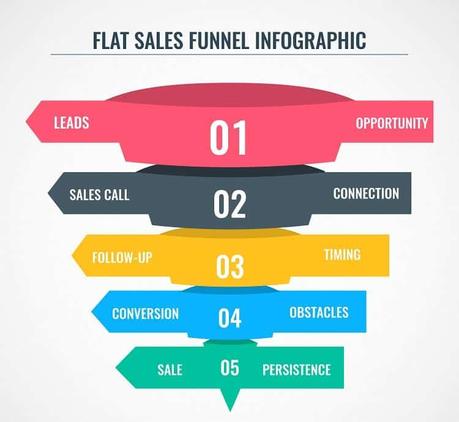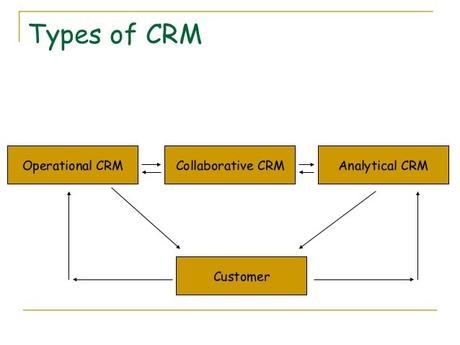Standing out from the competition to generate more leads and land more sales is an overwhelming task for any business that does not utilize sales automation tools and software to automate the sales process.
Sales automation is here to streamline sales day-to-day activities, manage, track leads, and automate repeated tasks through their buyer journey.
Right now, businesses are transitioning to operate online, and sales reps work from home due to the breakout of the Covid19 pandemic.
To operate online effectively, they must rely on automation tools and software to automate their day-to-day repetitive sales and marketing tasks.
Sales automation empowers marketing and sales teams to connect better and nurture their relationships, so sales automation is the answer to boosting your sales, improve productivity, and growing your business.
In fact, sales automation can increase deal closures by 30%, reducing sales administration time by 14%.
You may be asking: Is sales automation the future?
And it’s a valid question.
The answer is it’s here now; this is the future!
What is sales automation?
Sales automation eliminates manual, repetitive, time-consuming sales tasks using automation tools, software, and AI (artificial intelligence). It aims to prioritize sales activities that sales reps do daily.
Sales teams have many tasks that include:
- Creating lead magnets
- Traffic and data analysis
- Contacting new leads
- presentations
- Live events
- Demo requests
All these tasks make it hard to reach out to every lead and evaluate their interests. If your business is not using a sales automation tool yet, you should follow the benefits of sales automation to help empower you to optimize your sales team efforts.
Why Sales Automation?
As a business, you want to spend time on leads that are most likely to convert. Sales automation goes way beyond automating your sales process. As a matter of fact, it reduces 20-30% revenue cost inefficiencies for many businesses annually.
Here are the benefits of automating your sales process.
- Use sales automation to determine the best time when your leads are more engaged and ready to make a purchase.
- Automation optimizes a sales team’s efforts, which helps them spend time on leads that are more likely to buy.
- Automate the connection between your teams, for example, the marketing team to the sales team.
- Branding automation with a personal touch helps your business advance its relationship with its customers.
- Targeted outreach
- It helps stay relevant and timely, which increases customer satisfaction and closing more deals.
- It’s easy to follow up via phone calls, email, and web meetings.
- The use of software and AI improves accuracy, accelerates the sales process, and eliminates human errors.
- Since sales reps concentrate on a few specific tasks, it helps them be more productive.
Sales Lifecycle
To effectively automate your sales process, you need to understand the sales cycle. A sales cycle guides salespeople on steps to take to succeed in their sales efforts and works as a reference point in their progress.
What is a sales cycle?
A sales cycle is a specific set of tasks salespeople follow to close a new deal with a new customer. All businesses need to have a sales cycle in place so that their reps know the next steps to take in a buyer’s journey and organizing a business’s sales pipeline.

Source: Adamenfroy.com
Businesses that make consistent sales offer their salespeople a sales cycle as their degree of guidance.
Sales cycle stages
1. Prospecting
The first stage of a sales cycle identifies qualified leads, most likely to hear what you have to say about the product or service you’re selling. This ensures you fill your pipeline with prospects that are a good fit for the products you sell.
LinkedIn is the best platform to start sourcing leads.
2. Connect
After identifying customers, it’s time to reach out and make contact through social media channels like LinkedIn, Twitter, Facebook, and email and phone calls. Introduce yourself and the company you represent, your product, and the problem it solves.
3. Research
So you’ve reached out to the prospect. They are interested in learning more about your product: The next respective sales life cycle stage is to research more about your prospects’ company or business, their pressing problem, and how your product can help solve it.
4. Presentation
The best part about having a sales cycle is the tools and resources prepared for each step of the buyer’s journey. When it comes to the presentation stage, a sales team usually has ready templates that can be easily customized to fit the prospect’s specific business needs.
Once customized, send over your pitch to the companies’ decision-makers.
5. Handle objections
Objections are part of a sales process. At times your prospects have questions about your product, prices, business challenges, etc. and they’re bound to do so. Be sure to listen to them and fully understand their problem before addressing them.
6. Closing the deal
At this stage, ask your prospects if they are ready to buy and close the deal. They’re a few steps to fill out in this stage before signing the deal; these include consulting with the legal team to ensure all the legal aspects are met, full logistic detail from the IT team. Once all is ready, send them a review of the contract for signing.
7. Follow up and generate referrals.
You might be thinking: I have closed the deal, so why do I need to follow up? Well, the sales cycle does end at closing a deal. The final step is to ensure customers are delighted. Stay close and bring them on board to make more sales through upsells and referral customers they send to you.
CRM tool (Customer Relationship Management).
The most crucial tool in the sales automation process is CRM (customer relationship management). CRM is the software that manages your relationship with prospects, leads, and customers. It’s the master pierce that completes your sales automation puzzle.
To ensure that your brand’s revenue increases, you need the best CRM software in place. CRM ensures you:
- Track customers interaction in the sales journey
- Improve customer relationships
- Identify upsales
- Initiate customer retention programs
- Follow up on prospects.
- Automate repeated tasks
The type of CRM software you need is based on implementation and functionality. There are 4 types of CRMs, namely:
Campaign management CRMs: If your marketing campaigns’ goal is to collect and analyze customer data, this CRM type is for you. This data can then run other campaigns like email marketing and outreach through social media platforms such as LinkedIn.
Operational CRMs: This CRM type provides data to sales and marketing teams to help them identify potential customers in real-time. The CRM tool is equipped with features to automate sales, marketing, and customer service tasks.
Analytical CRMs: This CRM type is mainly for big companies collecting data like customer behavior through the sales funnel. This data can be used on multiple fronts to improve customer experience.
Strategic CRMs: If your business goal is to nurture long-term customer relationships, this tool is for you. It focuses on detailed insights into customer behavior to help you customize how your business interacts with them.
Collaborative CRMs: As the name suggests, collaborative CRMs mainly work to smooth the flow of information between teams, mainly the sales and marketing teams.

Each of these CRMs solutions has different features depending on your business needs.
Features of a good CRM tool for sales automation
Good sales automation software should have complex features like:
- Email automation
Email automation is one of the best marketing strategies that let you send multiple emails to a lead in a row. If a prospect doesn’t answer your first email, use an email automation tool to follow up, send them a second, third, or fourth email.
The importance of email automation in your sales automation process is determining when to send the follow-up emails and personalize your message with all the details to persuade the prospect to take action.
Let’s face it, customers expect personalization, so you need to blend personalized automated messages into your sales cycle and determine the right time to reach out when your prospects are most likely to respond.
- Scheduling meetings
So you need to schedule a meeting with a prospect, but your not sure when they will be free. That’s where a meeting scheduling tool comes in. Instead of sending date and a prospect gets back at you with a different date, you can send a link to a prospect to choose a specific time they’re free. It not only saves a lot of time but keeps your deals momentum.
- Automated deal management system
Having to record every call, meeting schedule, email sent, etc., is always tiresome. An automated deal management system can help with this.
The tool can log every detail of your sales process from open email rates, meetings, calls, and much more.
- Automatic contact and deal creation
In this digital era, adding contacts to CRM is easier than ever before. You can set up your sales and marketing software to create and edit new contacts automatically.
Best sales automation tools
Sales reps spend lots of time on manual day-to-day tasks like data entry, writing emails, finding new leads, scheduling meetings and calls. Utilizing automation, sales teams can automate all these time-consuming but necessary tasks with the right sales automation tools.
Furthermore, automating these tedious tasks can help your brand save limited time to blend automation with a personal touch, curate content, and target outreach.
The best news is, many tools can help automate your sales process and close more deals in a limited time. Here are my best picks:
1. Hubspot Sales Hub
Hubspot is an all-in-one marketing and sales tool that can help optimize your sales process. By using marketing and automation together, your marketing team can easily send a killer campaign and then send the data of the leads who have engaged the most to the sales team for a more personalized follow-up. No other tool can get that done than Hubspot.
Features that make Hubspot the best automation tool include:
- Personalized outreach
- Tracking engagement
- Effective follow-up automation
- Email templates
- Automated data entry
- Clicks and open rates data
- Calls and meeting scheduling
- Behavioral tracking
2. Active campaign
Active campaign is an automation tool that goes way beyond automating the sales process. With a customer base of more than 12,000 active campaign marketing and sales tools, empower you to optimize your sales team’s efforts to spend time on leads that are most likely to convert.
Active campaign features:
- Automated emails
- Internal notifications
- Personalized follow-up
- Deal CRM
- Lead scoring
- Win probability
3. LeadFeeder
Leadfeeder is an automation web intelligence tool that is best for converting web traffic into leads.
The tool reveals which companies are visiting your website, their engagement, and contact details. This data helps for a quick outreach, and the tool easily integrates with your CRM to share leads with your team.
Leadfeeder features:
- Identify leads
- Integration with other marketing automation tools like Mailchimp, Salesforce, Hubspot, Zapier, etc.
- Filters to help you generate leads that matter.
- Sales prospecting
- Visitor tracking
4. Leadiro
Leadiro is best for lead generation for the B2B contact data. Leadiro filters allow you to filter account data based on demographic, technographic, segmentation, and firmographic in emerging markets.
Leadiro features include:
- Identifying active prospects
- Cell phone contacts of over 3 Million executives
- Validated data
- Advanced data selection
- Their database includes specific geographic regions.
- Account-based marketing
Conclusion
I hope you have a clear understanding of what sales automation is, its importance, tools, CRMs, and how they can help your business’s digital growth.
Last Updated on April 4, 2021 by Isaac Ss
